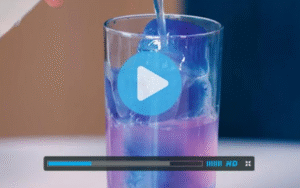Prostate health is a major concern for men as they age, with conditions ranging from benign prostatic hyperplasia (BPH) to prostate cancer affecting millions worldwide. Choosing the right treatment can feel overwhelming, as options include medications, surgical procedures, and natural support strategies. Understanding the benefits, risks, and effectiveness of each approach can help men make informed decisions and maintain optimal prostate health.
Understanding Prostate Conditions
The prostate is a small gland located below the bladder that produces seminal fluid. Common prostate issues include:
- Benign Prostatic Hyperplasia (BPH): Non-cancerous enlargement of the prostate that can cause urinary problems such as frequent urination, weak urine stream, or difficulty starting and stopping urination.
- Prostatitis: Inflammation of the prostate, often causing pain and urinary symptoms.
- Prostate Cancer: One of the most common cancers among men, which may require aggressive treatment depending on the stage and aggressiveness.
Each condition may require a different treatment strategy, which can include medications, surgery, or complementary natural approaches.
Medication for Prostate Health
Medications are often the first line of treatment for prostate conditions, especially BPH or mild prostatitis. The main types of medications include:
- Alpha Blockers
Alpha blockers relax the muscles around the bladder and prostate, making urination easier. Common medications include tamsulosin and alfuzosin. Benefits include rapid symptom relief, often within days. However, they may cause side effects such as dizziness, low blood pressure, or fatigue. - 5-Alpha-Reductase Inhibitors
These medications, such as finasteride and dutasteride, work by shrinking the prostate over time. They are more effective for men with larger prostates but can take several months to show results. Side effects may include decreased libido, erectile dysfunction, or reduced ejaculate volume. - Antibiotics and Anti-Inflammatory Drugs
For prostatitis caused by infection or inflammation, antibiotics or anti-inflammatory medications are prescribed to reduce symptoms and address the underlying cause. - Combination Therapy
Sometimes, doctors recommend using alpha blockers and 5-alpha-reductase inhibitors together for more effective symptom management.
Surgical Options for Prostate Problems
When medications are not sufficient, surgery may be recommended, particularly for severe BPH or advanced prostate cancer. Surgical interventions include:
- Transurethral Resection of the Prostate (TURP)
TURP is considered the gold standard for treating moderate to severe BPH. The surgeon removes parts of the enlarged prostate via the urethra, improving urine flow. Recovery usually takes a few weeks, with potential side effects including temporary urinary incontinence or sexual dysfunction. - Laser Surgery
Laser procedures, such as HoLEP (Holmium Laser Enucleation of the Prostate), use high-energy lasers to remove or vaporize excess prostate tissue. Benefits include less bleeding and faster recovery compared to traditional surgery. - Prostatectomy
For prostate cancer, prostatectomy involves removing part or all of the prostate. This can be done via open surgery or minimally invasive robotic techniques. Risks may include erectile dysfunction and urinary incontinence, but it can be life-saving for aggressive cancer. - Minimally Invasive Procedures
Other options, such as UroLift or prostatic artery embolization, can relieve BPH symptoms without major surgery. These treatments are less invasive, with quicker recovery and fewer complications.
Natural Support for Prostate Health
Alongside medical treatments, natural approaches can help support prostate health and improve overall well-being. These strategies may also reduce the need for invasive procedures in early stages. Key natural support methods include:
- Dietary Adjustments
- Tomatoes and Lycopene: Lycopene is a powerful antioxidant linked to reduced prostate cancer risk.
- Cruciferous Vegetables: Broccoli, cauliflower, and Brussels sprouts contain compounds that support prostate health.
- Green Tea and Pomegranate: Rich in antioxidants, these beverages may help reduce inflammation and support cellular health.
- Exercise and Weight Management
Regular physical activity helps maintain hormone balance, reduces inflammation, and improves urinary function. Maintaining a healthy weight lowers the risk of BPH and prostate cancer progression. - Herbal Supplements
- Saw Palmetto: Often used to reduce urinary symptoms related to BPH.
- Pygeum: Derived from African plum tree bark, may improve urinary flow.
- Beta-Sitosterol: Plant sterol that supports healthy urination.
- Lifestyle Changes
- Avoiding excessive alcohol and caffeine, which can irritate the bladder.
- Staying hydrated to maintain healthy urinary function.
- Reducing stress, which can impact inflammation and overall health.
Choosing the Right Treatment
The best treatment depends on the specific prostate condition, severity of symptoms, age, overall health, and personal preferences. A typical approach may involve:
- Starting with lifestyle changes and natural support strategies for early-stage BPH or mild symptoms.
- Using medications to manage moderate symptoms or slow disease progression.
- Considering surgical interventions when symptoms are severe, unresponsive to medication, or when cancer is detected.
It is essential for men to have open discussions with their healthcare providers about risks, benefits, and expectations of each treatment option.
Monitoring Prostate Health
Regular prostate check-ups, including PSA testing and digital rectal exams, help track changes in prostate size or function. Early detection of prostate issues can significantly improve outcomes, whether through medication, surgery, or natural support.
Conclusion
Comparing prostate treatments requires a careful balance between medical intervention and lifestyle management. Medications can provide symptom relief, surgery can resolve severe issues or remove cancer, and natural support strategies help maintain long-term prostate health. By understanding all available options, men can make informed decisions and take proactive steps toward maintaining their quality of life.
>> Click here now to find out the doctor-recommended prostate-shrinking mineral juice



